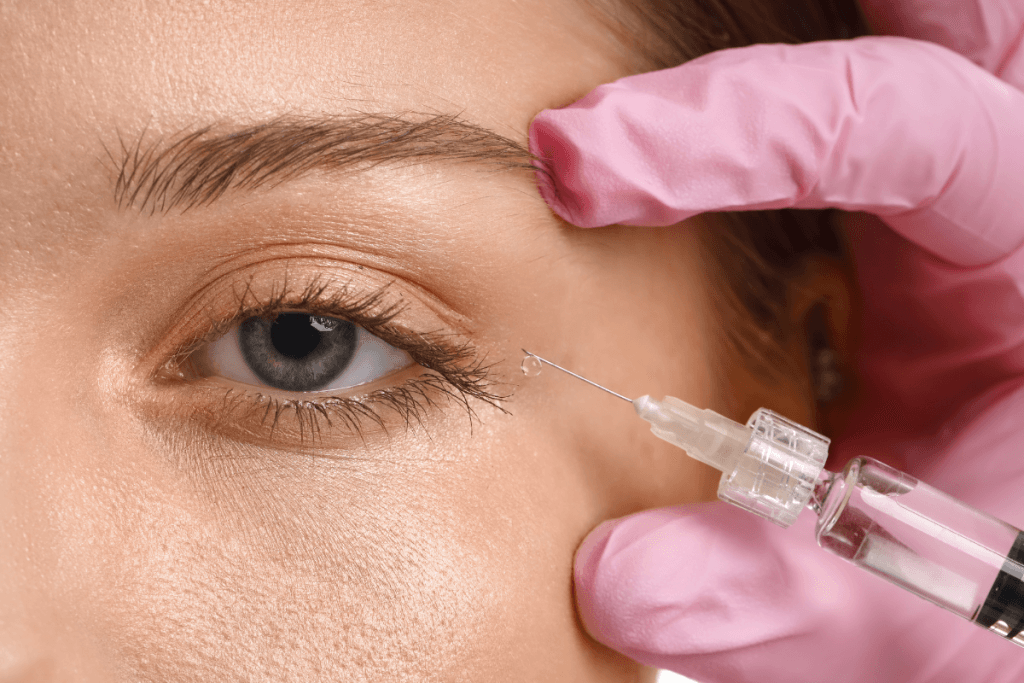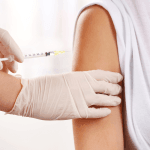EYLEA (aflibercept) has revolutionized the management of retinal diseases, particularly age-related macular degeneration (AMD) and diabetic retinopathy (DR), which are two of the leading causes of vision loss globally. These conditions are primarily driven by abnormal blood vessel growth and leakage in the retina, which leads to fluid buildup, macular swelling, and subsequent vision deterioration. Left untreated, these sight-threatening diseases can result in significant visual impairment or even blindness.
EYLEA Injection: A Powerful VEGF Inhibitor
EYLEA works by inhibiting vascular endothelial growth factor (VEGF), a key player in forming abnormal blood vessels that leak fluid into the retina, leading to vision loss in conditions like AMD and DR. The EYLEA injection is administered intravitreally, directly into the eye, allowing the medication to target and block the activity of VEGF, thus preventing further damage to the retina.
The effectiveness of EYLEA injections has been proven in numerous clinical trials, showing significant improvement in visual acuity and reduction of fluid in the retina. This makes it a critical intervention for patients with both wet AMD and diabetic macular edema (DME), as it halts the progression of the disease and, in many cases, restores lost vision.
EYLEA HD: Higher Concentration for Better Outcomes
Recently, EYLEA HD has been introduced as a higher-dose formulation designed to provide longer-lasting effects. EYLEA HD contains a higher concentration of aflibercept, allowing for extended dosing intervals without compromising efficacy. This is particularly beneficial for patients who find it challenging to maintain frequent injections due to age, mobility issues, or access to care.
For practitioners, EYLEA HD represents an advancement in treatment convenience, as fewer injections can improve patient compliance while maintaining the therapeutic benefits of the standard formulation. It also reduces the burden on the patient and the healthcare system, making it a preferred option for many clinicians.
Vabysmo vs EYLEA: A Comparative Look
Regarding anti-VEGF therapies, Vabysmo vs EYLEA is a standard comparison among ophthalmologists. Both medications work by inhibiting VEGF, but they target different pathways. Vabysmo (farcical) blocks both VEGF and Ang-2 (angiopoietin-2), offering a dual pathway approach to reduce inflammation and vascular permeability more effectively.
Clinical trials comparing Vabysmo vs EYLEA have shown similar efficacy in treating AMD and DME, but Vabysmo’s dual-targeting mechanism may provide additional benefits in some instances. However, EYLEA’s long-standing safety and efficacy track record continues to make it a trusted option for many physicians. The choice between these two often comes from individual patient response and physician preference.
Understanding EYLEA Side Effects
While EYLEA is generally well-tolerated, medical practitioners should be aware of potential EYLEA side effects to monitor in patients. Common side effects include:
- Eye pain or discomfort following the injection
- Increased intraocular pressure
- Floaters or blurred vision
- Conjunctival hemorrhage (redness or bleeding in the white part of the eye)
More severe complications, such as endophthalmitis or retinal detachment, are rare but require immediate medical attention. Monitoring patients post-injection and educating them about warning signs of infection or vision changes is crucial in preventing severe outcomes.
Who Makes EYLEA? A Look at Its Manufacturer
For those curious about who makes EYLEA, it is developed and marketed by Regeneron Pharmaceuticals in collaboration with Bayer. Regeneron, a leader in biotechnology, is known for its focus on innovative therapies in ophthalmology, oncology, and immunology. EYLEA’s success has solidified its position as one of the most widely used anti-VEGF treatments globally, supported by extensive research and development from Regeneron and Bayer.
Clinical Insights for Medical Practitioners
As with any treatment, patient selection and management are crucial to maximizing the benefits of EYLEA. When deciding whether EYLEA or EYLEA HD is appropriate, factors such as disease severity, patient compliance, and access to care should be considered. Furthermore, comparing Vabysmo vs EYLEA allows for a more tailored approach to treatment, as some patients may benefit from a dual-target therapy depending on their disease pathology.
Medical practitioners should also engage in shared decision-making with patients, discussing the risks and benefits of EYLEA, alternative therapies, and expected outcomes to ensure patients are fully informed and comfortable with their treatment plan.
Take away
EYLEA remains a cornerstone in treating macular degeneration and diabetic retinopathy, offering a reliable and effective way to manage these complex conditions. For medical practitioners, understanding the nuances of EYLEA, including the new EYLEA HD formulation and how it compares to other treatments like Vabysmo, is essential in delivering optimal patient care. By staying informed about its mechanism, side effects, and patient management strategies, clinicians can continue to provide effective solutions for vision preservation in patients with retinal diseases.
Frequently Asked Questions (FAQs)
What is the difference between EYLEA and EYLEA HD?
EYLEA HD contains a higher concentration of aflibercept, allowing for less frequent dosing intervals. This can improve patient compliance while maintaining the same efficacy as the standard EYLEA formulation.
How does EYLEA compare to Vabysmo?
While both medications are anti-VEGF treatments, Vabysmo also targets Ang-2, offering a dual pathway approach. Both are effective in treating AMD and DME, and the choice often depends on individual patient needs and physician preference.
What are the most common side effects of EYLEA?
Common side effects include eye pain, blurred vision, increased intraocular pressure, and conjunctival hemorrhage. Serious side effects such as infection or retinal detachment are rare but require immediate attention.
Can EYLEA improve vision in patients with AMD or DME?
Yes, EYLEA has been shown to stop the progression of AMD and DME and improve vision in many patients by reducing fluid buildup and restoring retinal function.







